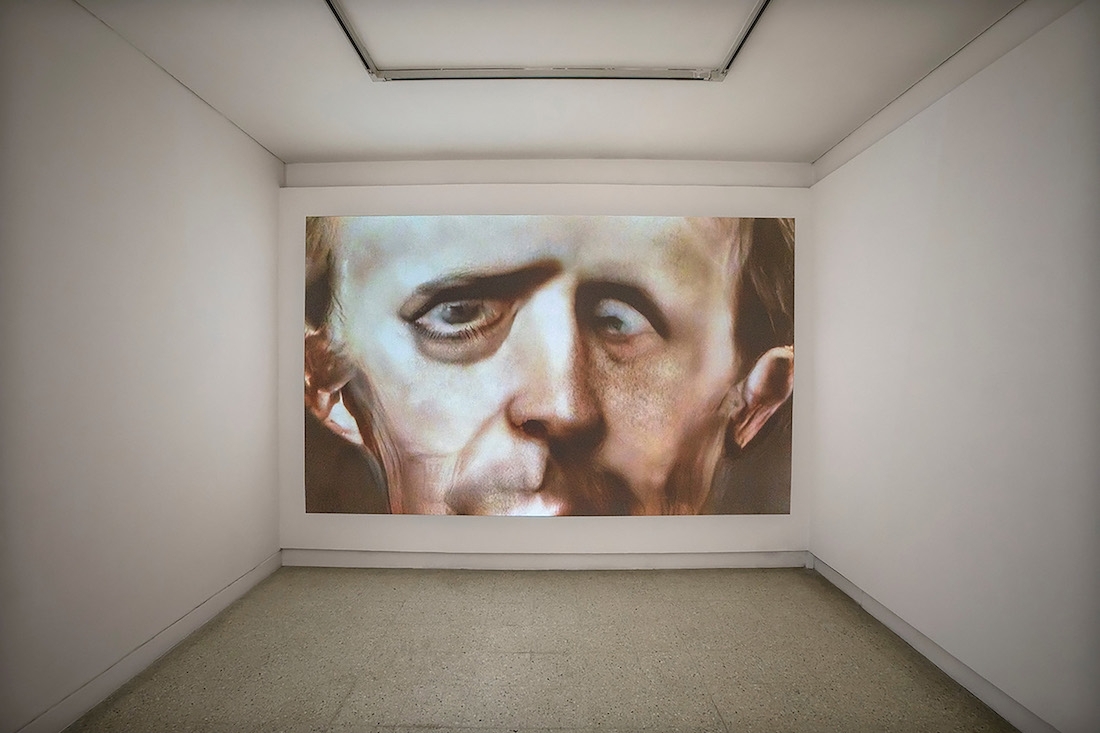

The ongoing group art show at Nature Morte, Delhi showcases works from artists around the globe, all with a common theme, the confluence of human creativity and artificial intelligence. Artificial Intelligence has emerged in the recent past in several domains, with speculations from the audience as to whether it would be a boon or a curse. While some say that it would make things easier, make our future brighter,make us more technologically advanced, others argue and question that if it is strengthened, wouldn’t it wipe out the need for real human intelligence?
Gradient Descent and the artists participating in it take a very different approach. Coming from USA, Japan, Germany, UK, India, Turkey and New Zealand, they are a living example that artists in different parts of the world have been experimenting with artificial intelligence as a means to create art. The artists namely Harshit Agrawal, Memo Akten, Jake Elwes, Mario Klingemann, Anna Ridler, Nao Tokui & Tom White come with their distinct art styles, but are tied by a common thread. A growing curiosity about the way that artists can collaborate with Artificial Intelligence. Their works showcased in Gradient Descent are a culmination of their own creative vision and of Artificial Intelligence, and in some part, satiate the very same curiosity.
Jake Elwes, talking about his work at Gradient Descent tells me, ‘In my work, ‘Closed Loop’, I decided not to curate the output at all, allowing the two artificial intelligences to converse with each other in a constant feedback loop: one which has been trained to recognise images as sentences, and the other which has been trained to generate images (from scratch) from sentences which are given to it. In my piece I set the algorithms off on this unresolvable mission (which wouldn’t have happened without me, the artist), so therein lies the hand of the artist. This required me to write a program which feeds the output of one into the input of the other, making them converse, and another program which sits on top to view the final product.’ The fact that two artificial intelligences were ‘trained’ to perform certain tasks and the fact that Jake had to write programs to attain his objective through the Artificial Intelligences, testifies the need for human intervention. Hence, when it comes down to art, we can look at artificial Intelligence as something which is a collaborator but not a replacer.
If you look at the pieces by the individual artists, you’ll see depth,individuality and some glaring idiosyncrasies, which I feel contemporary art must be accompanied by. The added touch of sophistication in each of these pieces, as their individual styles shine along with their interests and processes further generates interest for the observer. Owing to their interest in technology and artificial intelligence, their processes too are cumbersome yet intriguing. ‘There is not a single process I create my artworks but it changes constantly, but there are certain steps that are usually always involved. First I have to decide for a theme or set of data - usually images - that I train my models on. I have an ever-growing collection of categorized images that I collect with tools I write myself from all over the internet, I stopped counting but at the moment I probably have several hundred thousands or even a million images in my collection. After choosing a training set which usually consists of a few thousand images I have to find a good abstraction of that data - maybe you could call it a sketch - that I want the model to learn. The models I am working with are typically translating an input image into an output image.’ Mario Klingemann talks about how he gathers images and trains the artificial intelligence program to translate it into a viable output.

It is a given that these artists love working with Artificial Intelligence as a collaborator, though the question of ownership can’t be answered in a very clear light yet. While it is no doubt that Artificial Intelligence plays a role in the creation of these pieces, it’s intervention has only been made possible due to the brain of the artist. At least, that is how the scenario remains presently. Would this change in the future? Would we, as humans, want to give that power to artificial intelligence that, the need for our intervention diminishes? I think not. The fact of the matter is that art is human expression and without a human element, it wouldn’t be as original. As Jake Elwes puts it, ‘I don’t feel there is a case for the AI to own its own work yet, but it’s an interesting concept to speculate on, one which boils down to how much intelligence and creative autonomy it requires to acquire ownership (and pulls into question whether we are too wrapped up in our notions of human consciousness). At the moment a human/computer collaboration is still required on some level, and possibly it will always lead to richer results (in the same way cancer diagnosis is currently most accurate when done collaboratively using machine learning and a human expert).’ Any new technology, in any field, could be a boon or curse, depending on how we choose to use it. In the context of art, Artificial Intelligence in collaboration with real human creativity can create wonders but on it’s own? It might just diminish the very essence of art.
Text Supriya Jain